Exam DP-100: Designing and Implementing a Data Science Solution on Azure
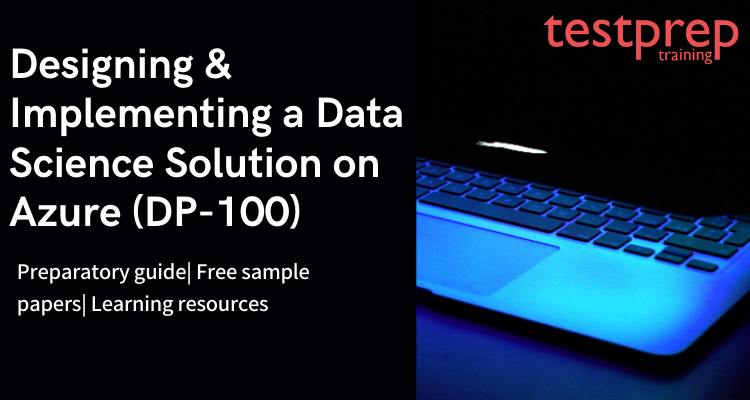
The need for professionals who have expertise in machine learning is growing day by day. So as to get entry in this field exams like Designing and Implementing a Data Science Solution on Azure (DP-100) by Microsoft has occupied the mind of IT generation. The future of machine learning is something that is beyond imagination both in terms of technology and fortune. Every organization now requires professional candidates that can handle the machines professionally and are effective in managing operations whilst reducing time wastage.
If machine learning also excites you and you wish to go deeper into knowing the things the DP-100 exam by Microsoft can be the best option for you to secure position into this sector. The Machine Learning sector has become quite competitive over years. So, you ought to work very hard to get to the top and grab the spotlight. This page is the complete preparatory guide for DP-100 exam. let us get underway!
What is Designing and Implementing a Data Science Solution on Azure (DP-100) exam?

The Azure Data Scientist applies their knowledge of data science and machine learning to implement and run machine learning workloads on Azure; in particular, using Azure Machine Learning Service. This entails planning and creating a suitable working environment for data science workloads on Azure, running data experiments and training predictive models, managing and optimizing models, and deploying machine learning models into production.
Exam overview
DP-100 exam consists of almost 40-60 questions which have t be answered in 180 minutes. the cost of taking the exam is $165 however, the prices may vary from place to place. Candidates must note that that the questions must be expected in different formats like multiple choice, multiple select, case studies and fill in the blanks. The DP-100 exam is available in 4 different languages – English, Korean, Japanese, and Simplified Chinese. You can take the exam through online mode by creating an account on Microsoft. There is no prerequisite for the exam the passing score for the exam is 700/1000.
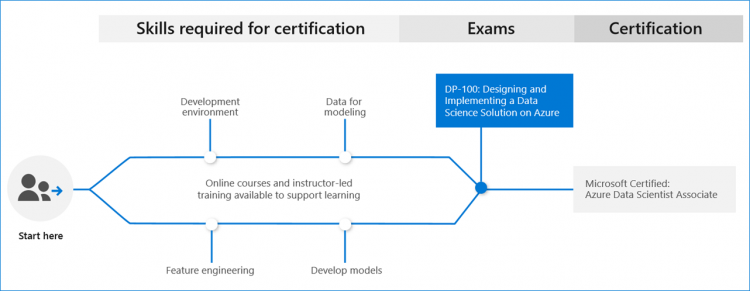
DP-100 Exam Details
| Name of the exam | Designing and Implementing a Data Science Solution on Azure |
| Code of the exam | DP-100 |
| No. of questions | 40-60 |
| Format of questions | multiple choice, multiple select, case studies and fill in the blanks |
| Cost of exam | $165 |
| Duration of exam | 180 minutes |
| Languages available | English, Korean, Japanese, and Simplified Chinese |
| passing score | 700/1000 |
Registration policy

Follow the steps written below to register for the exam:
- Go to the Microsoft site and find your certificate in the list. Then select schedule exam, to register.
- If the certificate will be available for your country then you will be able to select the exam during the registration process.
- You will also select the language of the greeter, proctor, and proctoring software.
Microsoft DP-100 Exam Result Policy
In order to pass the exam you have to score 700 out of 1000 points. however, if you did not score 700 marks they you will not qualify the exam. You can easily view your marks after completing your exam. however, if you want the detailed statement of your result then you have to wait for at least 5 business days. your score card will reflect the detailed result portion wise.
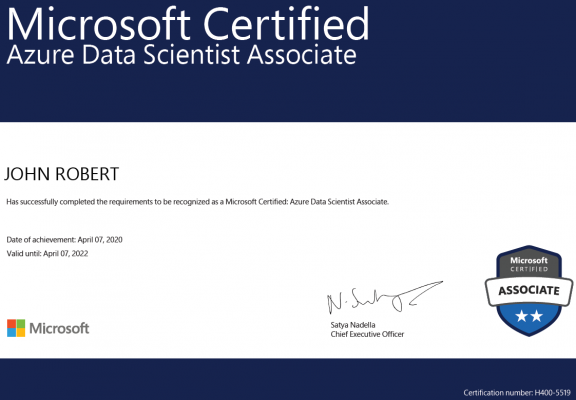
DP-100 Exam retake policy
As per Microsoft, their policy related to retaking of the exam is as follows:
- If you are unable to pass the exam in first attempt, the you must at least wait 24 hours before retaking the exam. You cannot retake the exam if you achieve a passing score.
- If you fail to pass the exam in second attempt too, then you must wait for a period not less than 14 days, in order to retake the exam. This is the same process for the failure in third, fourth or fifth attempt.
- You will not be allowed to give the exam more than 5 times a year. This year, 12-month period starts on your failure on 5th attempt. If you wish to give the exam more than 5 months a year then you have to contact Microsoft.
Academic Pricing Policy
Academic pricing on Microsoft Certified Professional exams is available in most countries (except India and China). You must verify your student status before scheduling your exam in order to be eligible for academic pricing.
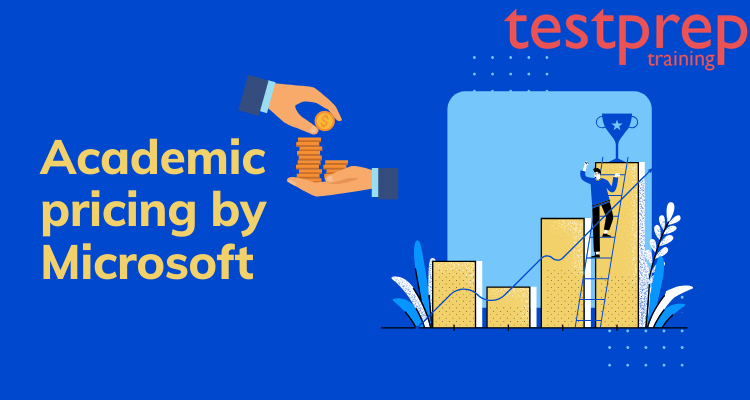
Applying student status through your account profile
- Sign in with your Microsoft account credentials.
- Select Profile settings from the Account menu at the top of the page.
- In the Job function menu, select, or ensure that you have selected, “Student.”
- Look for the academic pricing notice that appears next to the Job function menu. If your student status has not yet been validated, click “Get verified” to verify your status.
Applying student status when registering for an exam
- Sign in with your Microsoft account credentials.
- On the exam for which you want to register, click Schedule exam.
- On the Confirm your exam registration details page, ensure that the Job function field displays “Student – Verified.” If it does not, click “Get verified” to validate your status, or click Edit to change your status.
Verifying your academic status
Select the method you wish to use to verify your status. The methods include:
- School-issued email account
- School network credentials
- International Student Identity Card (ISIC)
- Verification code from a Microsoft representative or your institution’s administrator
- Documentation
Other exam policies
You can refer to the official site of Microsoft for the exam policies and other terms and conditions. Make sure to properly read all the terms and conditions so that you do not miss out on anything important for taking the exam.
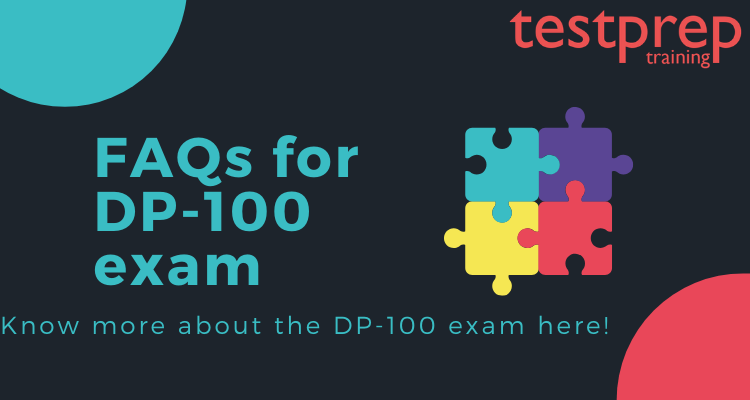
You can visit: DP-100 FAQs to know more.
Microsoft Exam DP-100 Course Outline
The most important step when you start preparing for an exam is getting to know completely about the syllabus. The detailed syllabus for DP-100 exam is as follows along with the compositions of topics in the exam:
Design and prepare a machine learning solution (20–25%)
Design a machine learning solution
- Determine the appropriate compute specifications for a training workload (Microsoft Documentation: compute targets in Azure Machine Learning)
- Describe model deployment requirements (Microsoft Documentation: Deploy machine learning models to Azure)
- Select which development approach to use to build or train a model (Microsoft Documentation: Train models with Azure Machine Learning)
Manage an Azure Machine Learning workspace
- Create an Azure Machine Learning workspace (Microsoft Documentation: Create workspace resources you need to get started with Azure Machine Learning)
- Manage a workspace by using developer tools for workspace interaction (Microsoft Documentation: Manage Azure Machine Learning workspaces in the portal or with the Python SDK (v2))
- Set up Git integration for source control (Microsoft Documentation: Source control in Azure Data Factory)
- Create and manage registries
Manage data in an Azure Machine Learning workspace
- Select Azure Storage resources (Microsoft Documentation: Introduction to Azure Storage)
- Register and maintain datastores (Microsoft Documentation: Create datastores)
- Create and manage data assets (Microsoft Documentation: Create data assets)
Manage compute for experiments in Azure Machine Learning
- Create compute targets for experiments and training (Microsoft Documentation: Configure and submit training jobs)
- Select an environment for a machine learning use case (Microsoft Documentation: What are Azure Machine Learning environments?)
- Configure attached compute resources, including Azure Synapse Spark pools and serverless Spark compute (Microsoft Documentation: Apache Spark pool configurations in Azure Synapse Analytics)
- Monitor compute utilization
Explore data, and train models (35–40%)
Explore data by using data assets and data stores
- Access and wrangle data during interactive development (Microsoft Documentation: What is data wrangling?)
- Wrangle interactive data with attached Synapse Spark pools and serverless Spark compute (Microsoft Documentation: Interactive Data Wrangling with Apache Spark in Azure Machine Learning)
Create models by using the Azure Machine Learning designer
- Create a training pipeline (Microsoft Documentation: Create a build pipeline with Azure Pipelines)
- Consume data assets from the designer (Microsoft Documentation: Create data assets)
- Use custom code components in designer (Microsoft Documentation: Add code components to a custom page for your model-driven app)
- Evaluate the model, including responsible AI guidelines (Microsoft Documentation: What is Responsible AI?)
Use automated machine learning to explore optimal models
- Use automated machine learning for tabular data (Microsoft Documentation: What is automated machine learning (AutoML)?)
- Use automated machine learning for computer vision
- Use automated machine learning for natural language processing (Microsoft Documentation: Set up AutoML to train a natural language processing model)
- Select and understand training options, including preprocessing and algorithms
- Evaluate an automated machine learning run, including responsible AI guidelines (Microsoft Documentation: What is Responsible AI?)
Use notebooks for custom model training
- Develop code by using a compute instance (Microsoft Documentation: Create and manage an Azure Machine Learning compute instance)
- Track model training by using MLflow (Microsoft Documentation: Track ML experiments and models with MLflow)
- Evaluate a model (Microsoft Documentation: Evaluate Model component)
- Train a model by using Python SDKv2
- Use the terminal to configure a compute instance (Microsoft Documentation: Access a compute instance terminal in your workspace)
Tune hyperparameters with Azure Machine Learning
- Select a sampling method (Microsoft Documentation: Sampling in Application Insights)
- Define the search space
- Define the primary metric (Microsoft Documentation: Set up AutoML training with the Azure ML Python SDK v2)
- Define early termination options (Microsoft Documentation: Hyperparameter tuning a model (v2))
Prepare a model for deployment (20–25%)
Run model training scripts
- Configure job run settings for a script (Microsoft Documentation: Configure and submit training jobs)
- Configure compute for a job run
- Consume data from a data asset in a job (Microsoft Documentation: Create data assets)
- Run a script as a job by using Azure Machine Learning (Microsoft Documentation: Azure Machine Learning in a day, Configure and submit training jobs)
- Use MLflow to log metrics from a job run (Microsoft Documentation: Log metrics, parameters and files with MLflow)
- Use logs to troubleshoot job run errors (Microsoft Documentation: Review logs to diagnose pipeline issues)
- Configure an environment for a job run (Microsoft Documentation: Create and target an environment)
- Define parameters for a job (Microsoft Documentation: Runtime parameters)
Implement training pipelines
- Create a pipeline (Microsoft Documentation: Create your first pipeline, What is Azure Pipelines?)
- Pass data between steps in a pipeline (Microsoft Documentation: How to use parameters, expressions and functions in Azure Data Factory)
- Run and schedule a pipeline (Microsoft Documentation: Configure schedules for pipelines)
- Monitor pipeline runs (Microsoft Documentation: Visually monitor Azure Data Factory)
- Create custom components (Microsoft Documentation: Create your first component)
- Use component-based pipelines (Microsoft Documentation: Create and run machine learning pipelines using components with the Azure Machine Learning CLI)
Manage models in Azure Machine Learning
- Describe MLflow model output (Microsoft Documentation: Track ML experiments and models with MLflow)
- Identify an appropriate framework to package a model (Microsoft Documentation: Model management, deployment, and monitoring with Azure Machine Learning)
- Assess a model by using responsible AI guidelines (Microsoft Documentation: What is Responsible AI?)
Deploy and retrain a model (10–15%)
Deploy a model
- Configure settings for online deployment (Microsoft Documentation: Configuration options for the Office Deployment Tool)
- Configure compute for a batch deployment (Microsoft Documentation: Deploy applications to compute nodes with Batch application packages)
- Deploy a model to an online endpoint (Microsoft Documentation: Deploy and score a machine learning model by using an online endpoint)
- Deploy a model to a batch endpoint (Microsoft Documentation: Use batch endpoints for batch scoring)
- Test an online deployed service (Microsoft Documentation: Testing the Deployment)
- Invoke the batch endpoint to start a batch scoring job (Microsoft Documentation: Use batch endpoints for batch scoring)
Apply machine learning operations (MLOps) practices
- Trigger an Azure Machine Learning job, including from Azure DevOps or GitHub (Microsoft Documentation: Trigger Azure Machine Learning jobs with GitHub Actions)
- Automate model retraining based on new data additions or data changes
- Define event-based retraining triggers (Microsoft Documentation: Create a trigger that runs a pipeline in response to a storage event)
Microsoft Exam DP-100 Study Guide
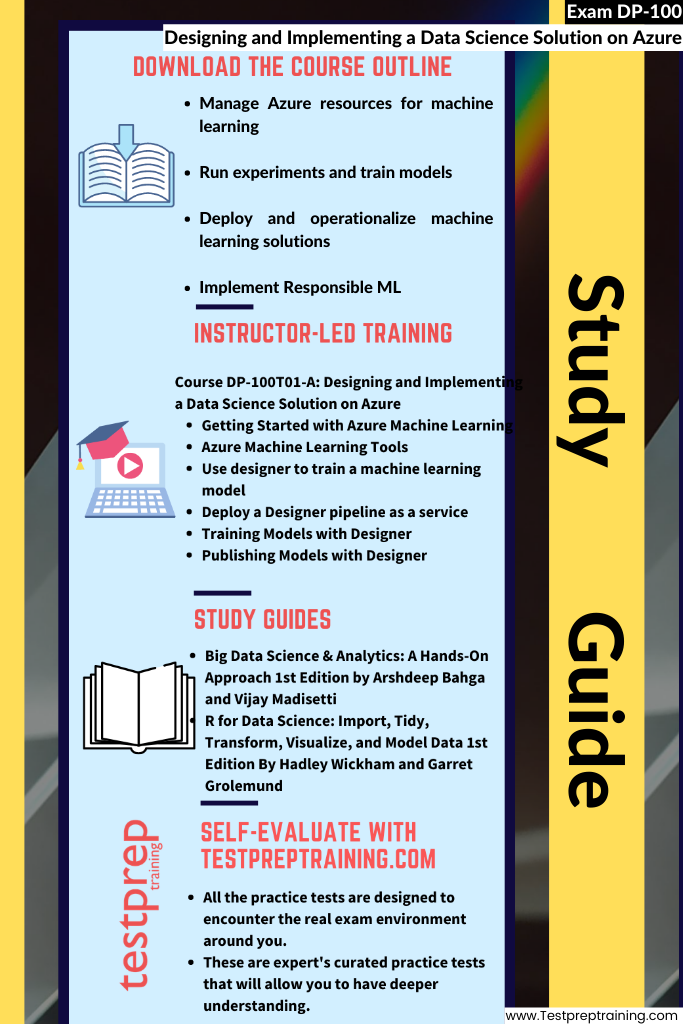
Your preparation marks how well you will pass the exam. there are numerous resources which you can choose from. But be very careful while choosing as this will determine how well you have gained the conceptual understanding. The certification checks your competency for a job so, you must be really handy with the practical application of the theoretical concepts. Let us have a look at handful of resources:
The official site
Official site is the most authentic source for the information about the exam. make sure that you visit official site to collect all the information and terms and conditions about the exam. Microsoft recommends a free online course and a paid instructor led course for preparation of DP-100 exam. you can find both of them on the official page related to the DP-100 certification. The courses recommended by Microsoft is as follows:
Online course:
Build AI solutions with Azure Machine Learning
Instructor led course:
Designing and Implementing a Data Science Solution on Azure
Books
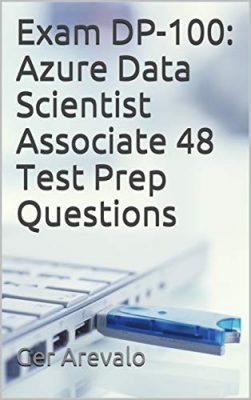
Books are the best valued resources for preparation. You can pick any book that suits your level of understanding. You can pick multiple books too as they will help to verify the content as well and you will get variety of content too. You can buy the books from book stores or can go to libraries. Also, you can refer to the online documentation from Microsoft which is mentioned above with the syllabus. you can refer to books as :
Exam DP-100: Azure Data Scientist Associate 48 Test Prep Questions
Self-study strategy
Your self-study strategy will help you to get an edge over others by improving your quality. You need to prepare your own timetable and follow that as strictly as you can. This will help in determining the week portions of your study and let you know if the resources you choose were beneficial for you or not. Apart from studying through your classes this type of self-assessment can help in boosting your confidence. Prepare a proper strategy and classify the topics into the one that require practical testing and other that are theoretical. Always try to prioritize your study time over other activities.
Practice papers and sample tests
Practicing more and more will help you score better. The more you practice the more your concepts will be clear and higher will be chances for you to be preferred candidate for the job. There ae many reliable sites that prove you with reliable content and 100% exam pass guarantee. You can try a free practice test now! Practicing will make your concepts stronger and will help in identification of your loopholes. So, make sure you practice as much as possible and through every way.
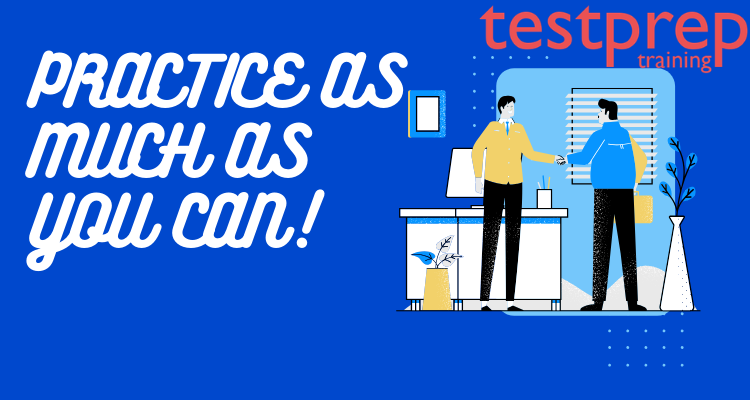
Online trainings and instructor led trainings
These are the best way of preparing for the exam whilst developing your concepts. The training sessions are delivered by the world class professors who have excelled in this field so you will get trained in the best possible way. They also help in clearing your doubts and provide you with good quality notes along with the regular tests.
